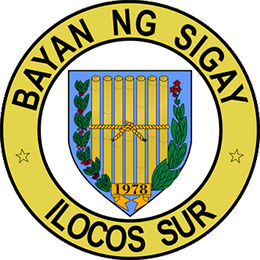History of sigay

Natives of the town claim that Sigay is as old as any other place in the province founded during the Spanish regime. But written records are yet to be found regarding its history. Oral tradition, however, has it that the name of the town originated from the ilocano term for fish trap, “sigay”. The legend goes that, in the older times, Lake Ban-ao in Barangay Mabileg was once the village’s most valuable source of fish. Around the area, one of the better-known fish species, the mudfish, apparently – in a fish trap, and brought the fish to the market. A Spaniard came along and asked where she got the fish. Thinking that the stranger was asking about the gear she caught the fish with, she answered, “Sigay”. It was by this incidence that the town started to be known by that name.
Another version of the etymology situates the legend in a setting when the “sigay” itself had to be re-invented for hunting. In those times, the village was still made up of “tribu” or tribes. As was the custom, each tribu chose a leader who ought to be the strongest, most fearless, and bravest in the clans. One of the leaders, and his hunters, loved to climb the mountains to hunt for food. Because it would then be easier to trap the animals in the forests, than run after them for the kill, the hunters devised a big net in the fashion of the “sigay” (fish trap/net). Hunting thus became much more uncomplicated. Because of the widespread use of the “sigay” both in the water and in the jungles, the lowland people who visited the place would eventually refer to it as Sigay.
The original settlers of Sigay were Igorots, or Pagans, who wandered from their ancestral lands in the Mountain Provinces north-westward to the Ilocos uplands. Many of them found a home in the mountains of Sigay. Years later, the natives’ descendants made vows in marriage with pretty Ilocanas. Their offspring were born mestizos – fair skinned, red lipped, pink cheeked and brown haired – and became known as the “New Ilocanos”. In the year 1700, when Christianity was introduced in the interior towns, baptized children were proclaimed as the “New Christians” or in Tagalog, the “BAGO”. To this day, descendants of the Igorot natives, the Bago tribes continue to live in Sigay.
The Bago people are religious, thrifty, hospitable and cooperative. Although most of the area has been modernized, there are definite traces of the native customs and beliefs. For instance, to this day, the dance “Tadek” is performed during the wedding celebrations. In many sitios, the bayanihan spirit generally prevails, especially when building houses, or during the planting and harvest seasons. However, some of the older rituals like the Kanlaw are no longer performed, unless necessary.
To the Bagos of past years, the family was the basic unit of society, and the members were expected to work hand in hand to earn a living. The men, as head of the family, were usually the breadwinners. These days, however, owing perhaps to poverty, the wives are often seen helping their husbands earn money – whether in the farm, the forest, in the family business, or as government employees/workers, in order to make ends meet.
The people prefer a peaceful life to complexities; nonetheless they aspire for economic and infrastructure development in the municipality, especially the development of the main road that would connect them to the lowland urban centers, where they would sell their goods, and eventually be able to augment to the family income.
Many members of the Bago tribe from Sigay ventured into the municipality of Tabuk – the capital town of what was then the province of Kalinga-Apayao – in the 1940s well into the 1950s. There, they found settlements which were then exclusively made up of settlers with Sigay origin – the most notable of which is the barangay of Casigayan (with the Sigay still kept in the name), which literally means “a place of Sigay people.”
Establishment of the Municipality
By the time the Spaniards arrived in the northern part of the country, all the interior towns of Ilocos Sur were part of Montanosa or the Mountain Provinces. A sub-province of Montanosa was that of Amburayan, a prominent area of trade and commerce, which among others, included the towns of Gregorio del Pilar, Quirino, Cervantes, Lidlidda and San Emilio. Called after the vast Amburayan River that cascaded through it, and nurtured its fields, Amburayan was a vast stronghold of the natives; the river itself, fed by the springs from the mountains in the East, was wide, and foreign vessels used to dock there to trade with the natives. When the Spanish founded Ciudad Fernandina (Vigan), all the interior towns, Sigay included, were cut off Montanosa, and these became part of the Province of Ilocos Sur. The original inhabitants were natives and had the same facial features as the Igorots.
Although already fully recognized by the Spanish Regime as a municipal district town in the 1800s, it was only in 1960 that Sigay emerged as a fully-fledged municipality, that which the residents called the New Era of Sigay. This came after the first elections of its local officials on November 12, 1959.
Today, Sigay is composed of seven barangays: Mabileg, Poblacion, San Ramon, San Elias, Abaccan, Matallucod, and Santo Rosario. For a long time, the seat of local government resided in Abaccan. Later on, the local executive, Mayor Simeon Wandas (1960–1977) decided to build a Municipal Hall in Maday-aw (now, Poblacion) where, eventually, he transferred all the local government’s occupations, including the Municipal Police Station.

